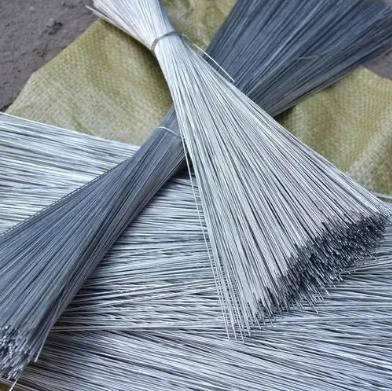Dec . 26, 2024 11:53 Back to list
Nails for Securing Roof Tiles in Construction and Renovation Projects
Understanding Roof Tile Nails The Unsung Heroes of Roofing
When it comes to roofing, most homeowners and builders focus on materials like tiles, shingles, and underlayments, but often overlook the importance of roof tile nails. These small, seemingly insignificant elements play a crucial role in the overall integrity and durability of a roofing system. In this article, we’ll explore the various types of roof tile nails, their applications, and why they are essential for a successful roofing project.
What Are Roof Tile Nails?
Roof tile nails, commonly known as roofing nails, are specialized fasteners designed specifically for securing roofing materials such as tiles, shingles, and panels to the underlying structure of a roof. These nails are engineered to withstand harsh weather conditions while providing lasting support, making them fundamental in any roofing installation.
Types of Roof Tile Nails
Roof tile nails come in various materials and designs to cater to different roofing needs
1. Material Types - Galvanized Steel One of the most common materials used for roof tile nails, galvanized steel is coated with zinc to prevent rust and corrosion. This makes it an ideal choice for areas with high moisture. - Stainless Steel For higher durability, especially in coastal or heavily salted environments, stainless steel nails are preferred. They offer superior resistance to corrosion. - Aluminum Lightweight and resistant to rust, aluminum nails are another option, but they may not offer the same holding power as steel or stainless steel.
2. Design Features - Length Nail length varies depending on the roofing material being installed. Longer nails provide better hold for thicker tiles, while shorter nails suffice for lightweight materials. - Head Types Roof tile nails typically have a larger head to distribute the load more evenly and prevent pull-through. Some models may feature a rubber washer beneath the head to ensure a watertight seal.
Importance of Using Proper Roof Tile Nails
Using the right type of roof tile nails is crucial for several reasons
roof tile nails

1. Structural Integrity Roofs are constantly exposed to elements such as wind, rain, and snow. The correct nails ensure that roofing materials remain secure, preventing lift and possible water infiltration. 2. Longevity of the Roof Installation with high-quality, corrosion-resistant nails extends the lifecycle of the roofing system. This is especially true in regions with extreme weather, where inferior fasteners may fail prematurely.
3. Warranty Compliance Many roofing manufacturers require specific fasteners to uphold warranty agreements. Using the recommended nails ensures compliance and protects homeowners against potential issues down the line.
Proper Installation Techniques
The effectiveness of roof tile nails greatly depends on proper installation. Here are some best practices
1. Nail Placement Nails should be strategically placed, typically near the top of each tile to avoid compromising the bottom edge, which is more vulnerable to wind uplift.
2. Nail Spacing Maintaining consistent spacing between nails is critical for uniform support across all roofing materials. This helps distribute weight and stress evenly.
3. Nailing Technique Overdriving nails can damage tiles, while underdriving can lead to inadequate holding strength. It’s essential to hit the right balance to ensure both stability and integrity.
4. Inspection and Maintenance Periodically checking nails for rust or looseness can identify potential problems before they escalate. This preventive maintenance can save homeowners significant repair costs.
Conclusion
While they may not be the most glamorous aspect of roofing, roof tile nails are vital components that contribute significantly to the safety and longevity of a structure. Understanding their types, importance, and proper installation techniques are crucial knowledge for homeowners and contractors alike. Investing in high-quality fasteners and adhering to best practices ensures that a roof can weather the storms and stand the test of time, securing peace of mind for years to come.
-
Pre Cut Wire - Straightened, Deburred, Custom Lengths
NewsNov.17,2025
-
Binding Wire for Sale - Durable, Rust-Resistant, Bulk Deals
NewsNov.17,2025
-
Field Fencing for Horses – Safe, Durable, Easy Install
NewsNov.17,2025
-
Euro Fence Factory: Durable, Custom Euro Style Fences
NewsNov.17,2025
-
Euro Fence Factory: Durable OEM Panels, Direct Pricing
NewsNov.17,2025
-
Chain Link Fence Suppliers | Galvanized, Factory-Direct
NewsNov.11,2025









